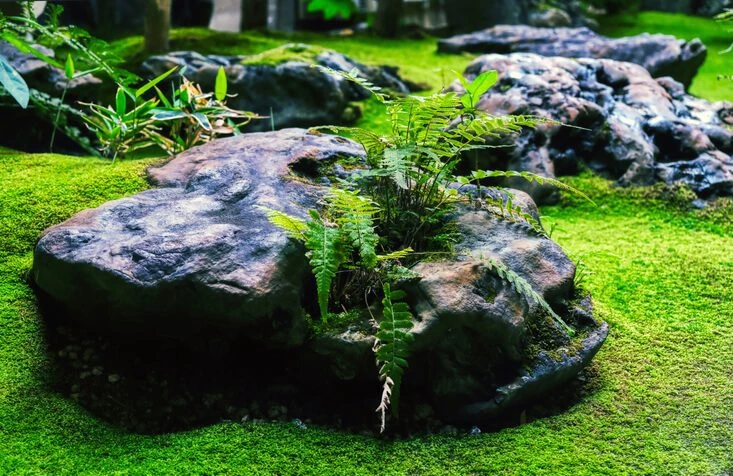If you are looking for an inexpensive and low-maintenance way to spruce up your yard this year, then you should consider adding a moss garden to your landscape.
Moss gardens are aesthetically pleasing and add color, texture, and a lush, foresty feel that is rarely found in other types of gardens. On top of these wonderful aesthetic benefits, moss gardens require minimal upkeep — yet another amazing perk for homeowners with limited amounts of time.
If you are attracted to a woodland, mythical look, a moss garden is the way to go. With just a small, shady patch of yard, you can completely transform your outdoor aesthetic. Best of all, moss gardens are well-adapted to the Pacific Northwest’s wet climate and don’t require a lot of maintenance.
How To Create The Perfect Moss Garden
In order to create the perfect moss garden for your home, it is helpful to use a variety of plants and design elements to create a canvas to plant your moss in. Include a combination of different things in your moss garden, using multiple shades, textures, and sizes to achieve your desired look.
For example, a small rock wall would add depth, color, and texture to your moss garden. Small rockeries can add a nice contrast to your moss garden and can also be used as a lovely backdrop.
Use other elements like flagstone or small round rocks throughout your moss garden to draw in people’s attention.
As for plants, shade-loving plants are accustomed to growing in the mossy woodland terrain. Plants like ferns or hostas thrive in the shade and are common companions to moss, making them a natural choice for any moss garden.
What Are The Main Types Of Moss?
There are more than 12,000 species of moss, however, since that is far too large a number to break down here, let’s sort the different kinds of moss into more digestible categories.
There are just two main kinds of moss used for moss gardens.
- Acrocarpous – moss is characterized by its ability to stands upright
- Pleurocarpous – moss is prostrate and tends to grow at a faster rate than Acrocarpous moss.
There are numerous other moss-like plants that are mistakenly labeled as moss and used in moss gardens, however, these lack certain of the defining qualities of true moss and do not always thrive in moss gardens.
How Will A Moss Garden Benefit Your Yard?
Moss gardens require minimal maintenance and upkeep — making them an ideal garden type for homeowners without a lot of spare time. Moss gardens also thrive in overcast, shady conditions which make them perfect for Washington homeowners trying to accommodate Pacific Northwestern weather.
On top of the ease of having a moss garden, these gardens also boast of other benefits such as increased visual appeal and texture throughout your yard. A little goes a long way when it comes to gardening and yard maintenance, you’ll be surprised by just how much of a difference a moss garden can make in your backyard.
Moss is also extremely beneficial for air purification, a fact which many homeowners find to be a driving incentive when creating a moss garden. So on top of being extremely beautiful, moss gardens can be beneficial for your health and home as well.
How To Maintain Your Moss Garden
As mentioned above, maintenance for a moss garden is relatively simple and minimal. Because moss is accustomed to growing in damp conditions, it is important to keep the soil around your moss consistently moist. This shouldn’t be too much trouble if you live in the Pacific Northwest where rain is plentiful and the climate relatively mild.
If you do encounter particularly warm or dry weather, simply take a spray bottle and mist the moss. Besides the occasional misting, your moss garden should be given a good watering (whether by rain or hose) about twice a week.
Have A Custom Moss Garden Installed In Your Yard!
Here at New Life Rockeries, we employ a team of only the most diligent landscaping professionals. We are able to take the aesthetic vision of our clients and act on what they’ve envisioned to create beautiful, cohesive yard spaces. If you are in need of landscaping services of any kind, our experts at New Life Rockeries would be thrilled to help you out.
We have extensive experience designing and building rock walls, rock water features, moss gardens, rock gardens, and many more home aesthetics. If you are unsure what landscape adjustments to make to your yard, don’t worry! Our experts at New Life Rockeries landscape contractor would be more than happy to help you find a landscape design that works for you and your home and can give you a price quote as well.
To begin your yard makeover, call our experts at New Life Rockeries today.

